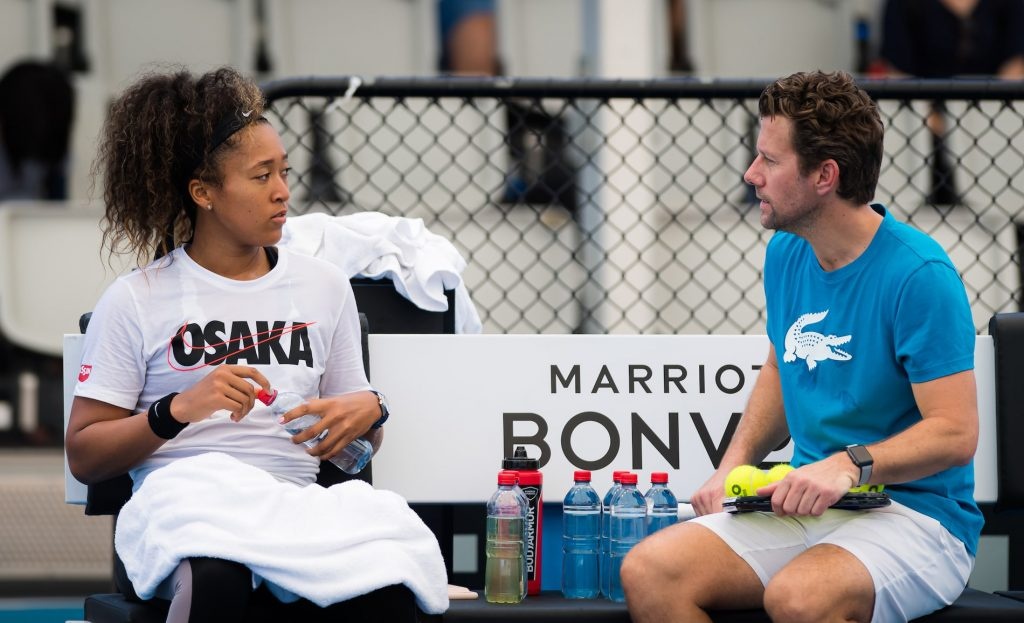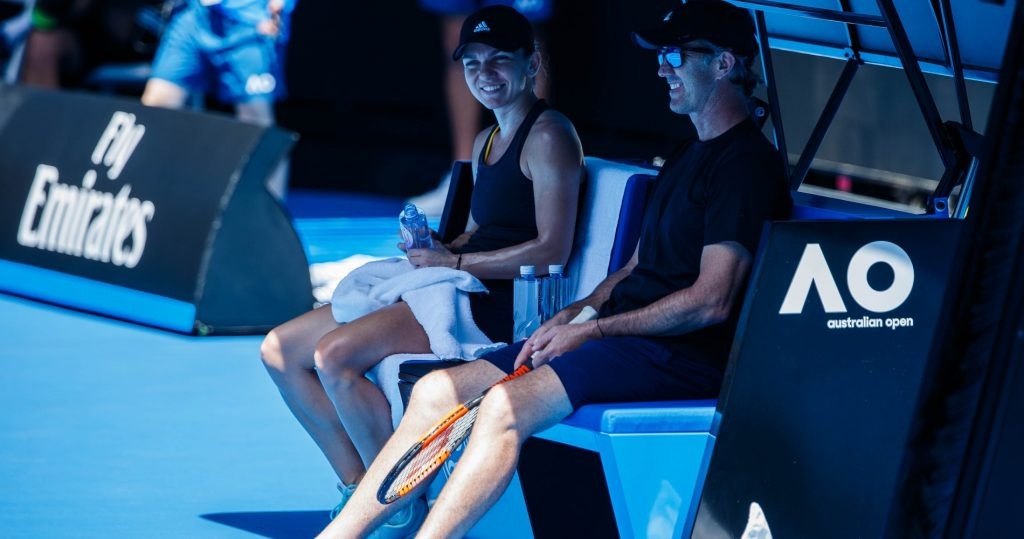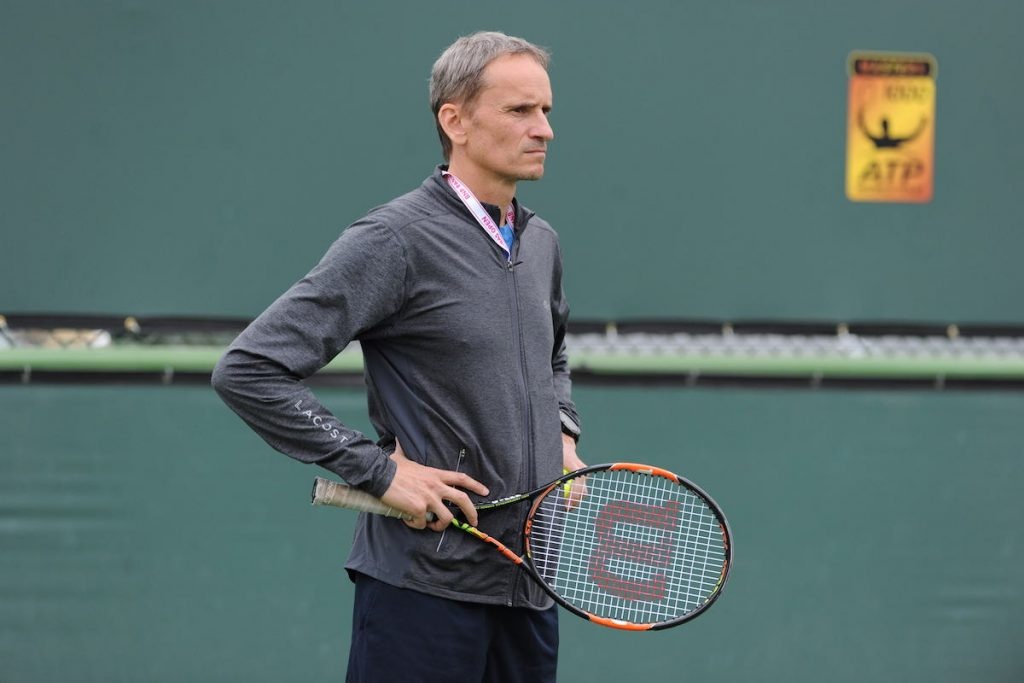How fit, or not, will the players be once out of confinement?
As the Tour still hopes to be able to resume in the coming months, the time is coming to wonder in which shape the players will be when the time to play finally comes.
 Feature “Confinement” – Tennis Majors
Feature “Confinement” – Tennis Majors
Most of the players, men and women, haven’t been able to hit the ball and train normally since the start of March. As some countries start to let their population out progressively, and as the Tour still hopes to be able to resume in the coming months, the time is coming to wonder in which shape the players will be when the time to play finally comes.
• Watch our “Major Talk with Elina Svitolina, who didn’t play since Monterrey final
They’re used to hit hours per day on court and to have specific schedules for each week. Schedules depending on tournaments and goals. But for weeks now, most of them have been stuck inside their homes, trying to work out as best as possible, but in no way at the same intensity as what’s the usual amount for professional tennis players. So what will happen once they’ll be allowed to get out? Will they be ready to compete rapidly? Or are they currently losing too much fitness to be able to get going quickly?
“Aerobic capacities decrease very quickly” – Laffite
“When you no longer have your normal activity, especially at the cardio level, aerobic capacities will decrease very quickly (4 to 5 days)”, explains the French fitness trainer Laurent Laffite, who worked with Garbine Muguruza in the past.
So spending two months or more without that normal activity can potentially have dire consequences for the players. That’s why during that confinement, Laffite is pointing at two areas of work that have to be maintained in order for the players to be ready to go when needed.
“The priority is to keep aerobic solicitations despite the confinement. It’s quite easy to have them at high intensity for short periods, with the tabata methods (20 seconds of high-intensity work, 10 seconds of rest, and that for four minutes) or the CrossFit methods where little space is needed. Through jumps, burpees (mix of squats, pumps, sheathing), punches, rope jumps: it takes you 2m2. The most complicated thing is to work on medium and low-intensity cardio if you can’t go out for example. I told the young players I work with to buy an apartment bike if possible.”
Once this is taken care of, Laffite advises players to make sure they work on their muscles.
“There are movements that must continue to be made. The player will spend more time sitting, moving less, so his muscles will not be solicited as usual, then the idea is to work everything, all the time. In particular in the articular amplitudes and on the muscular groups.”

Wim Fissette, Naomi Osaka’s coach, confirms the need for players to have stayed active throughout that period in order to be as fit as it’ll be needed once the Tour will be back on track. His trick is to get them out of their usual routine, so the pleasure remains instead of a day-to-day grin for people who had basically just been out of an offseason.
“At a moment where there’s no real purpose, which is tough for the biggest competitors out there, let’s try to work on something that you didn’t have the time before, like the net game maybe, or something just outside of your comfort zone. So you can really work on something now that you didn’t take the time to work on before. It can be a really useful time, but you have to do it. Same for the physical work, just do something different, do some other sports or maybe do some pilates or yoga, so you keep yourself fit, but also have fun.”
They may be professional tennis players, but in the end, they are people like everybody else, and so under the same stress, frustration, and limitations as the rest of the world. That’s why Darren Cahill didn’t put too much pressure on Simona Halep’s shoulders.
“Staying mentally healthy, not wearing yourself out” – Cahill
“Simona is doing most of her physical training either inside the house or in the garage. The gyms are not available to her. I don’t think she’s been on the court all that often. Maybe three or four times, but just to feel the ball. I told her to do what she thought was enough to feel good about herself and to be healthy in the mind and body. I told her not to kill herself through this period, because we don’t know how long this is going to last. Stay inside. Stay safe, and then once we know what’s going to happen, we’re going to have plenty of time to get into some serious training. It’s not going to happen overnight. We’re going to have a long window of possibility.”

For the Australian, the main thing is to make sure players won’t have overstressed themselves during that lockdown time.
“It’s really just about staying mentally healthy, not wearing yourself out through this. It’s difficult because in tennis, you try to peak or training to make sure physically and mentally you’re ready for a particular tournament. But when you don’t know when that tournament is, it’s tough to schedule the training so that the training is really just more maintenance at the moment, especially for somebody like Simona, who’s got a great physical base anyway.”
“We really need to make it very gradual” – Fontang
When there will finally be a date for a first official tournament, many players might also hesitate to go right away. Some might want to skip it and make sure they’re ready to play in order to avoid injuries.
“I’m not worried for them going back to training, I’m more worried about the first tournaments where there will be a risk of seeing players get injured”, confirmed Laffite.
Being confined is stressful and tricky for the players, but finding the right strategy after all of this won’t be easy either.
“The big risk when you haven’t played for a long time is that the tendons and joints have lost a little muscle tension”, says Frédéric Fontang, coach of Felix Auger-Aliassime.
“We really need to make it very gradual, and not resume competition right away for someone who wasn’t able to hit at all, because there is a risk of injury. It also depends on what has been done before: if the player has done good physical preparation, it reduces the risks.”
“We have put in place a physical development program” – Fontang
Fontang and the rest of FAA’s team took an interesting decision for this lockdown period. When the Canadian got back home after Indian Wells, he got straight into a quarantine where he only did the fitness work needed to maintain the shape. But after much talks, they all decided to shift the focus once quarantine was over, but confinement still the rule.
“As the situation is still not open, he still cannot play tennis but in the meantime, he set up a fitness training room at his home so we were able to move on to a phase, which is still ongoing, of physical preparation development. He has all the equipment he needs to be able to do it, from a distance with his physical trainer Nicolas Perrotte. We have put in place a physical development program.”

They’re also watching and analyzing matches so everybody’s brain stays on the ball. Main thing being: trying to use this period the best they can for Felix.
“He is young, he has things to develop physically and you never have time to do it with the chain of seasons. And the quality of a top athlete is also adaptation.”
When the Tour will resume, we will also witness the disparity in players’ training facilities, as not everyone can have a personal gym nor a court next to the house. Top players who have the biggest bank accounts might receive another advantage and so the gap could be even bigger than before.
“This is where we find out who wants what in life” – Sumyk
For Sam Sumyk, it won’t only be explained by the means some have compared to others, but also mostly by the mindset players will show.
“You can always do something, but being able to plan well when you don’t have a return date is very complicated. But you can still train physically, and I know some people can still hit the ball a little.”
The French coach doesn’t want to hear about motivation struggles.
“You can keep your discipline and a lifestyle in line with your profession. No need to have a special motivation: your personal motivation, it still exists, no? I know there will be some who will be ready when it resumes, and others who will cry saying ‘shit, if I had known.’ This is where we find out who wants what in life. We will see those who have this resilience. No one will play good tennis right away but the goal is not there, the goal is to be ready. Djokovic in two months, he won’t have taken 4kg… I also think the best players right now are doing a lot more than they say or show. I can’t believe they’re doing nothing.”
Hay que animarse y seguir!!!! 💪🏻💪🏻💪🏻 #yomequedoencasa #iorestoacasa#istayhome #jerestechezmoi pic.twitter.com/3uX6pc4ubo
— Rafa Nadal (@RafaelNadal) April 2, 2020
Cahill even thinks that the top players, women and men, who’ve been out there on the Tour for a decade or more, could really benefit from this break.
“There are a lot of players that needed this break. The older ones, you know: you look at Novak, Rafa, and I know for Simona: playing on Tour has been a grind for many years. You get worn down. So there’s been an opportunity for a lot of the players to give their body a much-needed break. So there are some positives to come out of this.”
And that’s why Cahill doesn’t think it’ll take too long for players to be competitive again.
“I don’t think it’s going to take long at all. It would just be a few weeks once the green light is given to get players back on the court. And the physical bases are still going to be there because they’re all pretty athletic anyway, and everybody is kind of doing a little bit of work.”
The secret should be in striking the right balance. As Laurent Laffite believes the players who are going to get out in the best shape from this all ordeal will be the ones who will solve a tricky riddle. Not doing too little, but also not doing too much.
“You risk getting tired of chasing after the unknown” – Laffite
“What can be problematic is to start to doubt the plan put in place for when tennis resumes. If you start to doubt, it will be difficult on a daily basis to train and invest yourself. But if you are convinced that it will allow you to return to the same level as before the break, then it’s worth it“, explains Laffite, the fitness trainer.
Motivation will be key then.
“Those who will be demotivated will be those who will not trust their program. Then the difficulty for all is that now we’re asking them again the same efforts as in the offseason, and without even touching the racket. It still can have a beneficial side as some bodies will rest, heal while others will train in what they cannot usually do. Also keeping in touch with the racket is great, but to make sense of it, you have to still commit. You risk getting tired of chasing after the unknown, and also when the Tour will finally resume, you will have to be 100% motivated and fresh.”
Players who might get out of this Covid-19 tunnel in the best shape could finally be the ones whose life doesn’t resolve 100% around the yellow ball. Wim Fissette thinks so, and that’s why he’s happy that Osaka has developed other interests in recent years.
“She likes working on her design. She’s been acting very creative and has different interests. Maybe if the only thing in your life that you love is tennis, then it’s even more difficult. So it’s great if you love other things. You can maybe focus a bit more on those things. She will definitely work on the designs, as she was already working on it with some clothing brands. And I think she knows this is good for the time being.”
[bloc_twitter src=”https://twitter.com/RafaelNadal/status/1249749650128674817?s=20″]
We’ve heard Alizé Cornet was writing a book, we’ve seen Rafael Nadal busy in the kitchen, and many players are now for sure spending time on hobbies we had no idea about. They have also found a kind of routine now during this confinement, so the stress of the first couple of weeks might have diminished. Yet for those who are starting to lack the money, it might be the opposite.
And so again we will see in the coming weeks or months at which point the disparities we know exist in the tennis world have been amplified, or not, by the pandemic. We will also see which team has found a way to make the player go through the established program with the best work ethic. Competition never really stops and there’s little doubt that this confinement is a more discrete but still very real one.
• Another Major Feature : The good old commissionner idea is back (and this time, there’s a chance)
• Another Major Feature : 99% of the coaches are not paid, and they won’t stand waiting for a change








